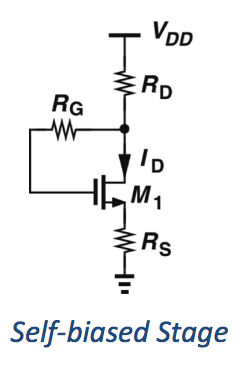If there is no voltage drop across \$R_G\$ as I have been taught. What is the purpose of it?

Even though there is no voltage drop across \$R_G\$, it still conveys a voltage to the transistor's gate. If you remove \$R_G\$, then the gate is floating.
So why not make \$R_G\$ zero ohms? That will also convey the voltage to the gate. However, it will create a low impedance for a signal that is applied to the gate, which will then just be \$R_D\$ ohms away from an AC ground at \$V_{DD}\$.
We need a resistor to help maintain whatever input impedance is necessary at the gate.
If you look at the DC picture, it goes something like this. Initially, no current flows through the transistor and so the drain is at \$V_{DD}\$. If the drain is at \$V_{DD}\$, that means that the gate is also at \$V_{DD}\$. But if that's the case, the transistor is actually turned on and so current flows, causing a voltage drop on \$R_D\$. But, aha, we have feedback! If current flows through \$R_D\$, then the drain is not in fact at \$V_{DD}\$ and therefore neither is the gate, so the transistor is not quite as turned on as we thought. The solution to this feedback loop is the operating point, and as you can see, \$R_G\$ is very much involved in it.